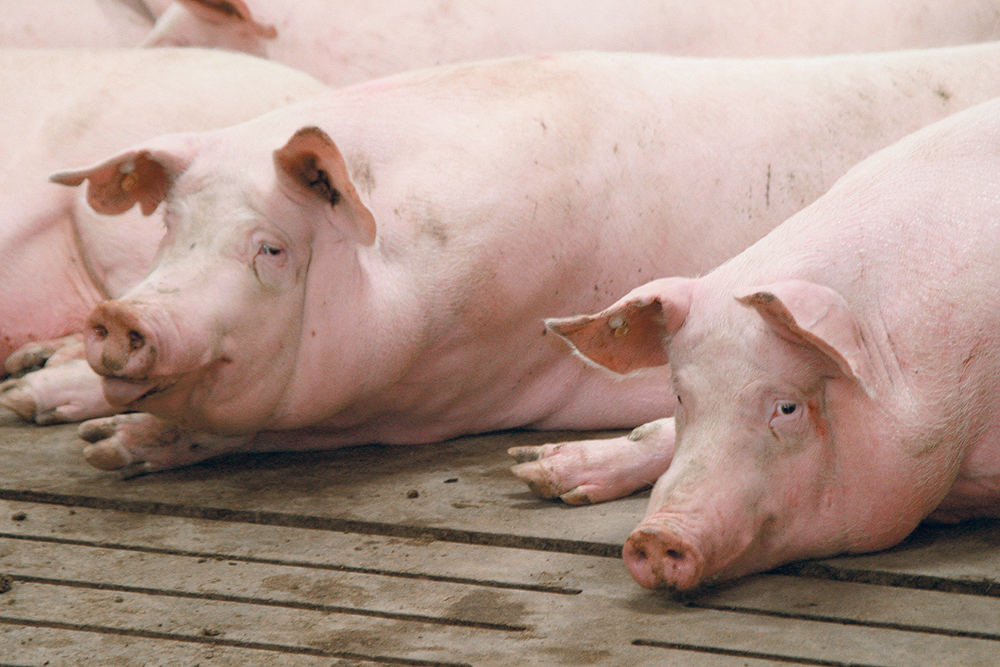Hog producers say the mechanism used to determine prices in Western Canada ignores regional supply and demand
Western Canadian hog pricing is so broken it not only doesn’t reflect supply and demand for pigs but is actually sending the opposite signals that that laws of supply and demand should dictate.
It’s such a critical, multi-cause failure that if it is not corrected soon, malfunctioning prairie hog prices could cause the whole industry to crater, says recent analysis prepared for Western Canada’s hog farmers.
“Supplies in Canada are lower than packer demand (and) need, but the pricing in Western Canada is telling producers to reduce supply and/or exit the industry,” says a report the hog producer organizations of Manitoba, Saskatchewan, Alberta and British Columbia recently presented to Canada’s main hog slaughter companies.
Read Also

Critical growing season is ahead for soybeans
What the weather turns out to be in the United States is going to have a significant impact on Canadian producers’ prices
“Finding a reasonably equitable method of sharing the value of the pig is fundamental to the long-term sustainability of the industry for both producers and packers. The fact that the overall growth in the western Canadian hog sector is near zero and existing barn maintenance is at an extremely low level, suggests an industry in significant decline if not directly toward collapse.”
The analysis suggests a systemic failure in the pricing structure that dominates the money independent farmers receive for selling their pigs. The problems include:
- Prices based on U.S. market conditions expressed through futures contracts, not western Canadian supply and demand.
- U.S. price that might not accurately reflect the price that the vast majority of U.S. hogs are actually selling for.
- A lack of connection between cash market prices for pigs and the wholesale value of processed pork.
This has created a problem in which:
- Western Canadian pig prices are chronically undervalued.
- Farmers suffer incredible negative volatility as losses become catastrophic and unpredictable.
- Farmers have become unwilling or unable to reinvest even in barn maintenance, let alone building a new generation of hog barns.
- Slaughter plants are running well under capacity due to a dearth of market hogs.
- The industry is unable to react to strong export demand from Asia.
- The entire industry faces a bleak future.
Not all of Canada’s farmers face an equal amount of woe. Quebec’s producers are the beneficiaries of a new pricing system in which wholesale pork values (approximated by the “cut-out” price) are strongly reflected in pig prices.
Neepawa, Man.’s HyLife Foods has also integrated cut-out values into its pricing, an example the western hog producer organizations have urged Canada’s other packers to emulate.
A number of other packer pricing formulas also integrate some of the cut-out value into pig prices, but not generally enough to accurately reflect supply and demand, according to producer groups.
The packers have been willing to talk. The farmer organizations have met with Maple Leaf and Donald’s Fine Foods and have communicated with Olymel. All three have introduced some type of premium payments for at least a temporary period, such as Maple Leaf’s $20 per hog additional payment for 13 weeks, but the organizations say only a permanent fix to the chronic pricing problem will prevent most of Canada’s independent family and Hutterite producers from leaving the industry. The problems have lasted for years and are not the product of COVID-19, although that has exacerbated the situation.
“While this extra cash is welcomed, unfortunately the losses for producers continue to accumulate at a significant rate with little support on the horizon,” said the report of Donald’s willingness to add a temporary additional payment.
It might sound easy to revamp hog pricing to eliminate the flaw’s in today’s pricing, but packers are competing with each other and are anxious to avoid creating competitive disadvantages for themselves versus other companies.
“As we compete in domestic and international markets, we continue to review different pricing models that benefit all parties, strengthen the Canadian hog industry, and won’t put our facilities at an unfair competitive (situation) compared to the larger Canadian, U.S. and international packers,” wrote Allan Leung, chief executive officer of Donald’s, in a June 11 response to the producer groups.
Will a new western Canadian pricing system “grow the overall industry and provide additional returns for all or push smaller packers out of primary processing and incentivize larger packers to further integrate their production requirements?”
The present crisis has been provoked by the COVID-19 price slump in the U.S. and exacerbated by the strong export sales and demand of Canadian packers as China fills in the giant hole created by African swine fever, which has decimated its barns.
What should be a good time for western Canadian hog producers is turning out to be a disaster and that needs to be fixed before it is too late for many independent farmers, producer groups say.


















